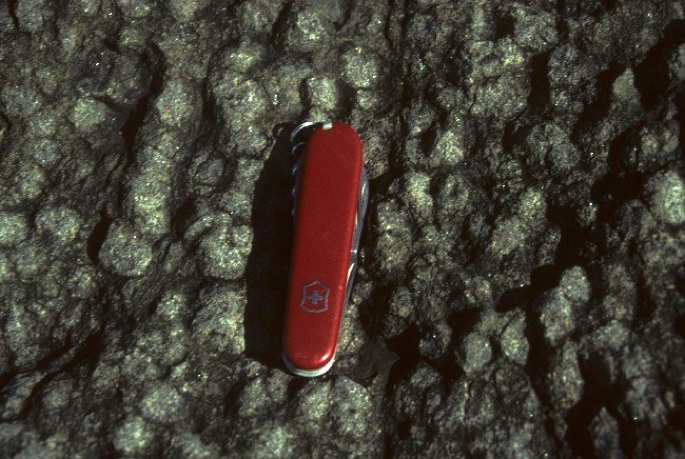Detailed study of the composition of the lavas of the PLV, as determined by study of a complete section on the Keweenaw Peninsula, was completed by Paces (1988). In this study, Paces provides a general description of the flows with respect to texture and thickness (see Basalt Types); chemical composition (Table 1); mineral chemistry (Figure 2); and petrography (Table 2). The lavas resemble other younger examples of continental flood basalts (see also LIPS sources) with their main composition being olivine tholeiite that contains high MgO and Ni, but also have enrichment of highly incompatible elements. There are minor amounts of more evolved magmas and overall the magmas become more primitive with time. Isotopically (Nd and Sr) the lavas are very close to bulk earth values. Paces (1988) describes the rocks:
PLV lava flows display a relatively limited number of textures based on the relationships between dominant mineralogical constituents. These components originally included groundmass plagioclase, olivine, clinopyroxene, iron-titanium oxide, volcanic glass or mesostasis, occasional phenocrysts or microphenocrysts of plagioclase, and sometimes olivine. Textures that developed within the coarsest portion of different lava flows range from fine-grained intergranular through subophitic and ophitic. This same range in textures can be observed in individual, thick lava flows which grade from intergranular chilled flow margins to a coarsely ophitic flow interior. True quench textures (Lofgren, 1971) including skeletal, dendritic or spherulitic olivine and pyroxene, have not been observed in PLV basalts.









